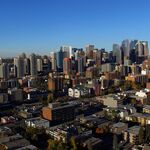Macleod's inertia is not a question of city admin or engineers being short-sighted (although they have been), it's a question of politics. How much political capital would the "pro-urbanist" crowd burn trying to fix it?
Because of space constraints, there aren't many solutions that don't involve removing lanes or otherwise constraining commuters.
And the moment you do, you have a mob of angry people with pitchforks and torches ready to fight you.
They'll say you're spending a lot of money to make their commutes worse, and they'll be right. They'll say the development could be better elsewhere, and they'll be right. And crucially, the average Joe, who might not otherwise care about urbanist issues, will probably take their side, because the effects on their commute will be immediate and obvious whereas the effects on the urban development on Macleod will be more gradual and tenuous.
So you'd end up with a backlash that would suck the energy out of the efforts to make urban improvements everywhere, and then the next election there would be a whole slew of anti-urban candidates boosted into power.







